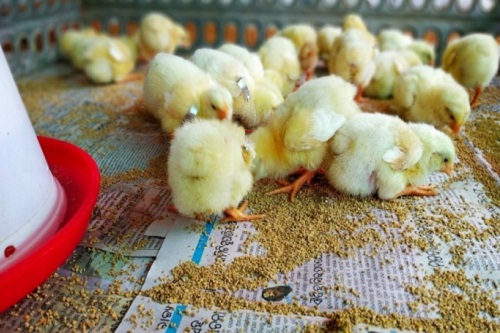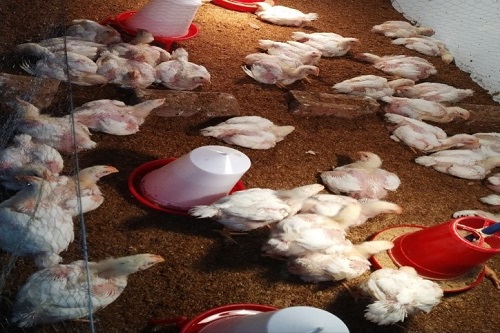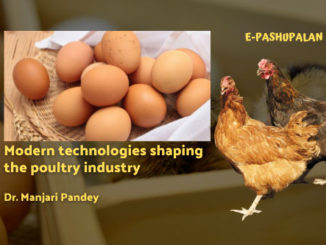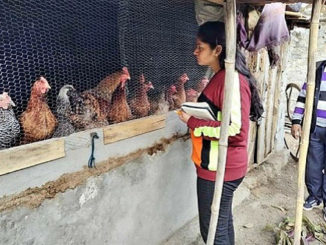Introduction
Proteins that serve as biological catalysts are classified as enzymes. Catalysts help to speed up chemical reactions. Substrates are molecules on which enzymes can operate, and the enzyme transforms the substrates into various molecules known as products. Almost all metabolic processes in the cell require enzyme catalysis to proceed at high enough rates to support life.
Classification of Enzyme
All enzymes are classified under 7 major groups–
- EC 1- Oxidoreductases: catalyze oxidation/reduction reactions
- EC 2- Transferases: transfer a functional group
- EC 3- Hydrolases: catalyze the hydrolysis of various bonds
- EC 4- Lyases: cleave various bonds by means other than hydrolysis and oxidation
- EC 5- Isomerases: catalyze isomerization changes within a single molecule
- EC 6- Ligases: join two molecules with covalent bonds.
Need of Exogenous Enzyme in Poultry Feed
The poultry industry in developing countries is facing several difficulties as a result of the high prices of traditional feed ingredients such as yellow corn and soyabean meal, which are mostly used in poultry rations. In the case of high-cost yellow corn, some feed suppliers are opting to substitute yellow corn with lower-nutritional-value ingredients such as triticale, wheat, barley, or sorghum. These alternates are rich of Non-starch polysaccharides. Non-starch polysaccharides are undesirable because they reduce digestion and absorption of all nutrients, including fat and protein. Enzyme supplementation in the diet may improve the nutritional benefit of crops rich in soluble NSPs. Exogenous enzyme supplementation in wheat, barley, sorghum, or triticale-based rations has been shown in various studies to increase poultry efficiency to levels comparable to corn-soya-based rations. Enzymes, which the birds do not contain in significant quantities, are recommended to be supplemented in the diets. Cellulase (ß-glucanases), xylanases and related enzymes, phytases, proteases, lipases, and galactosidases are some of the enzymes that have been used or have the ability to be used in the feed industry in recent years.
Enzymes used in Poultry Feeds
| ENZYMES | SUBSTRATE |
| Proteases | Proteins |
| Lipases | Lipids |
| Amylases | Starch |
| ß-glucanases | Barley |
| Xylanases | Wheat |
| ß-galactosidases | Grain legumes Lupins |
| Phytases | Plant feedstuffs |
Sources of Enzymes
Most of the enzymes presently used in the beverage and food industry are from Aspergillus, but cellulases and hemicellulases are derived from Trichoderma. Newly, genes encoding has been used in cloning for various enzymes, including phytases, xylanases and β-glucanases and expressed in various commercial systems (plants and microorganisms)

Methods of Enzyme Supplementation
Enzymes are made in a variety of forms to supplement poultry diets. They come in powder, granules, and liquid forms. Because some enzymes are thermolabile, high temperatures will decrease their activity. There are several methods to mix enzymes with dietary ingredients in poultry diets-
- Ingredients are combined with enzyme powders and granules.
- After pelleting, enzymes can be used as liquids.
- Enzyme powders can added to premix.
- Enzymes as liquids can mixed with other ingredients or added to the drinking water.

Benefits of Enzymes
- Reduction in digesta viscosity.
- Enhanced digestion and absorption of nutrients especially fat and protein.
- Improved Apparent Metabolizable Energy (AME) value of the diet.
- Increased feed intake, weight gain, and feed–gain ratio, Reduced beak impaction and vent plugging
- Decreased size of gastrointestinal tract.
- Altered population of microorganisms in gastrointestinal tract, Reduced water intake, reduced water content of excreta, reduced production of ammonia from excreta, reduced output of excreta, including reduced nitrogen and Phosphorus.
Conclusions
The poultry industry is getting more open to the use of exogenous enzyme supplements. The addition of enzymes to poultry rations improves feed digestibility, resulting in higher efficiency and results. When NSP diets are fed, a reduction in digesta viscosity can improve nutrient utilization by “normalizing” the histology of the gut. More thermo-tolerant enzyme preparations, higher enzyme activity, and enzymes that work well at low gastric pH values will certainly be the subject of future advances in enzyme technology.








Be the first to comment